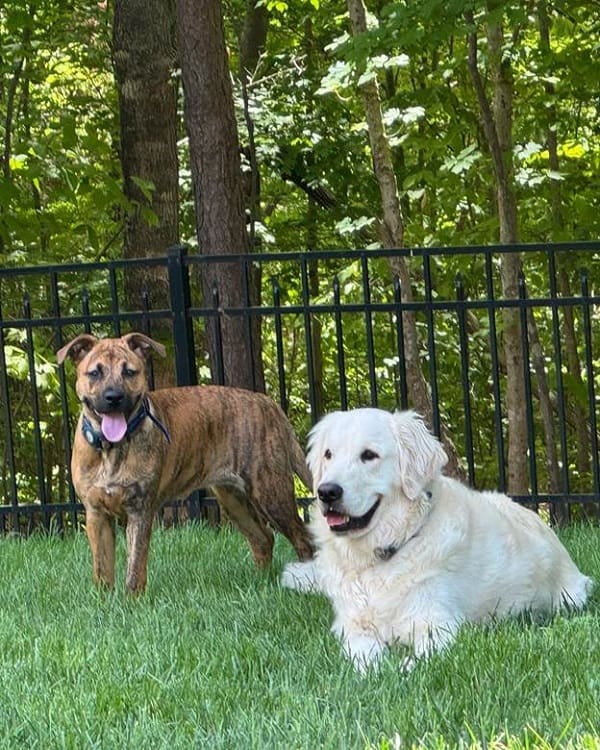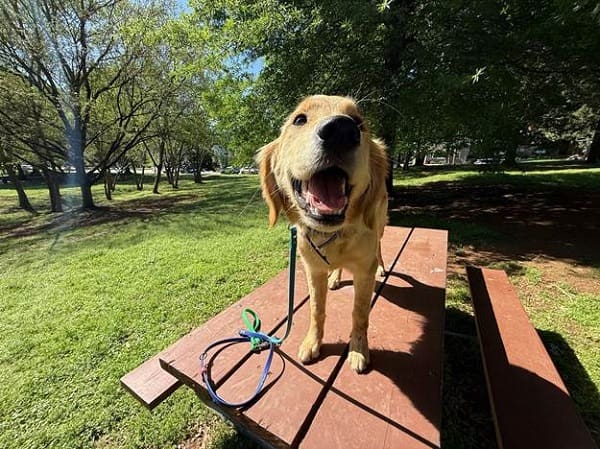The sound of the key in the lock is the starting pistol. You brace yourself for the whirlwind of fur, paws, and unrestrained joy that’s about to collide with your legs. While this enthusiastic greeting is a hallmark of the canine-human bond, constant jumping can be frustrating, messy, and even dangerous. The solution isn’t about suppressing your dog’s spirit; it’s about redirecting it. This guide provides a complete framework for how to stop your dog from jumping, strengthening your relationship through clear communication and mutual respect.
Here, we will explore the psychology behind jumping, proven training techniques, and essential environmental management to help you achieve calmer, more polite greetings
Table of Contents
- Why Dogs Jump: The Mind of Your Canine
- The Golden Rule for Calm Greetings: Four on the Floor
- Proactive Training Methods to Stop Jumping
- Environmental Management: Your First Line of Defense
- Common Mistakes That Reinforce Jumping
- The Role of Exercise and Mental Stimulation
- When to Seek Professional Guidance
- Frequently Asked Questions
- Conclusion: Building a Bond Through Better Behavior
Why Dogs Jump: The Mind of Your Canine
To effectively address jumping, we must first understand its origins. Jumping is rarely about dominance; it’s a deeply ingrained and often misunderstood canine behavior. For puppies, jumping is a way to greet their mother and get closer to her face. This instinct carries over to their human family.
As noted by VCA Hospitals, this is a natural greeting behavior. Your dog jumps to get closer to your face, their primary point of social contact. It’s their way of saying, “Hello! I’m so happy to see you!” This action is fueled by:
- Excitement: The return of an owner or the arrival of a guest is a high-point of their day.
- Attention-Seeking: Your reaction—even a negative one—can inadvertently reinforce the behavior. Pushing them down or yelling can be interpreted as a form of play.
Understanding this allows us to approach the problem with empathy, not frustration. We’re not correcting a “bad” dog; we’re teaching a wonderful dog a more appropriate way to express their joy.
The Golden Rule for Calm Greetings: Four on the Floor
The central principle for correcting jumping is simple: all good things happen when all four paws are on the ground. This “Four on the Floor” rule becomes the foundation of your training.
Attention, praise, treats, and petting are exclusively given when your dog is standing calmly or sitting. The moment their front paws lift off the ground, all interaction ceases. This creates a clear, binary choice for your dog: jumping makes the good things go away, while keeping four paws down makes the good things happen.
Proactive Training Methods to Stop Jumping
Method 1: Withdraw Attention, Reward Calm
This technique directly teaches your dog that jumping is counterproductive.
- Turn Away: The instant your dog jumps, turn your back to them. Fold your arms and look at the ceiling. Give them zero attention. No talking, no touching, no eye contact.
- Wait for Calm: Remain turned away until they stop jumping and have all four paws back on the floor.
- Reward Immediately: The second they are calm, turn back and offer quiet praise or a small treat. If they jump again, repeat the process.
This method requires patience, but it clearly communicates that jumping turns off your attention, while calm behavior turns it back on.
Method 2: Teach a Better Behavior
An excited dog needs a job to do. Instead of just telling them “no,” give them a “yes.” Teaching an alternative behavior like “Sit” or “Go to Place” gives them a clear, positive action to perform when they feel excited.
- Practice “Sit” as a Greeting: When you come through the door, immediately ask for a “Sit.” Only greet them once their bottom is on the floor.
- Establish a “Place”: Train your dog to go to a specific spot, like their bed or a mat, when the doorbell rings. This gives them a designated area to be calm while you greet guests. You can find more tips in our dog training programs for essential obedience commands.
Environmental Management: Your First Line of Defense
Training is vital, but managing the environment prevents the behavior from being practiced and reinforced in the first place. This is especially important when you can’t actively train, like when guests arrive.
Structuring Your Home for Success
Set your dog up for success by controlling the situation before the excitement escalates.
- Use a Leash: When you know guests are coming, put your dog on a leash before opening the door. This allows you to keep them at a distance and prevent them from physically reaching your guests to jump.
- Create Zones: According to the Humane Society, using tools like baby gates can be highly effective. A gate can keep your dog in a separate area during the initial, most exciting moments of a guest’s arrival. Once everyone is settled, you can allow a calmer introduction.
- Use a Crate: If your dog is comfortable in their crate, it can be a safe and calming space for them during chaotic times. Explore our resources on behavior training programs for proper crate training techniques.
How to “Train the Humans” for Consistency
Your training will only be effective if everyone applies the same rules. Your dog cannot be expected to learn if one person ignores jumping while another encourages it.
- Set Clear House Rules: Have a family meeting. Explain the “Four on the Floor” rule and the “ignore and reward” strategy.
- Instruct Your Guests: Before guests enter, briefly explain the plan. Say, “We’re training him not to jump, so please ignore him until he’s calm. It will help us a lot!” Most people are happy to help.
Common Mistakes That Reinforce Jumping
Many common reactions to jumping actually make the problem worse. The American Kennel Club (AKC) confirms that any attention, even negative attention, can be seen as a reward. Avoid these pitfalls:
- Kneeing or Pushing: This can be interpreted as rough play by your dog and can even cause injury.
- Yelling “No!” or “Down!”: The loud, sharp noise can add to the excitement and energy of the situation rather than calm it.
- Grabbing Their Paws: This is a form of physical engagement that reinforces the attention-seeking aspect of jumping.
The Role of Exercise and Mental Stimulation
A dog with pent-up energy is far more likely to exhibit excitable behaviors like jumping. A robust routine of physical exercise and mental work can significantly reduce the intensity of their greetings.
Ensure your dog gets daily walks, runs, or games of fetch. In addition, work their brain with puzzle toys, scent work, or training sessions. A tired, mentally fulfilled dog is a calmer dog. For more ideas, read about canine enrichment activities on our dog training blog.
When to Seek Professional Guidance
While these techniques are effective for most dogs, some situations require a more personalized approach. If the jumping is extreme, tied to anxiety, or if you’re struggling to see progress, it may be time to consult a professional.
At Dog Owners Academy, we believe in preserving a dog’s personality while building a foundation of mutual respect. For dog owners in the Charlotte, NC area, our founder Turk Akbay has developed relationship-based methods that address the root cause of behavior. Programs like our in-home training sessions or our specialized behavior training programs provide the expert guidance needed to create lasting change.
Frequently Asked Questions
Why does my dog only jump on guests?
Dogs often see guests as a source of novel excitement. They haven’t learned the rules with these new people yet. This is where management—using a leash or baby gate—and instructing your guests become critical.
How long will it take to stop my dog from jumping?
This depends on your dog’s age, temperament, and—most importantly—your consistency. Some dogs learn in a few weeks, while for others, it may be an ongoing process of management and reinforcement.
Can an old dog learn not to jump?
Absolutely. While a puppy may learn faster, an older dog is perfectly capable of learning new rules. The key is unwavering consistency and finding what motivates them, which is a core part of our training philosophy.
Conclusion: Building a Bond Through Better Behavior
Teaching your dog not to jump is about more than just correcting an annoying habit. It’s an opportunity to deepen your communication and improve your relationship. By understanding why they jump, managing their environment, and consistently rewarding calm behavior, you are building a foundation of trust and respect. You’re showing your dog that their enthusiastic spirit is cherished, but that there are better ways to express it.
This journey requires patience, but the result—a calm, polite greeting that honors the unique personality of your dog—is well worth the effort.
Are you ready to create a more harmonious relationship with your dog? If you’re in the Charlotte, NC area, schedule your free in-home consultation with Dog Owners Academy and let’s start the journey together.
Opening Hours
M-Sa: 10am - 7pm
Address
1111 Central Ave., Charlotte, NC 28204
Phone
844 864 3647




